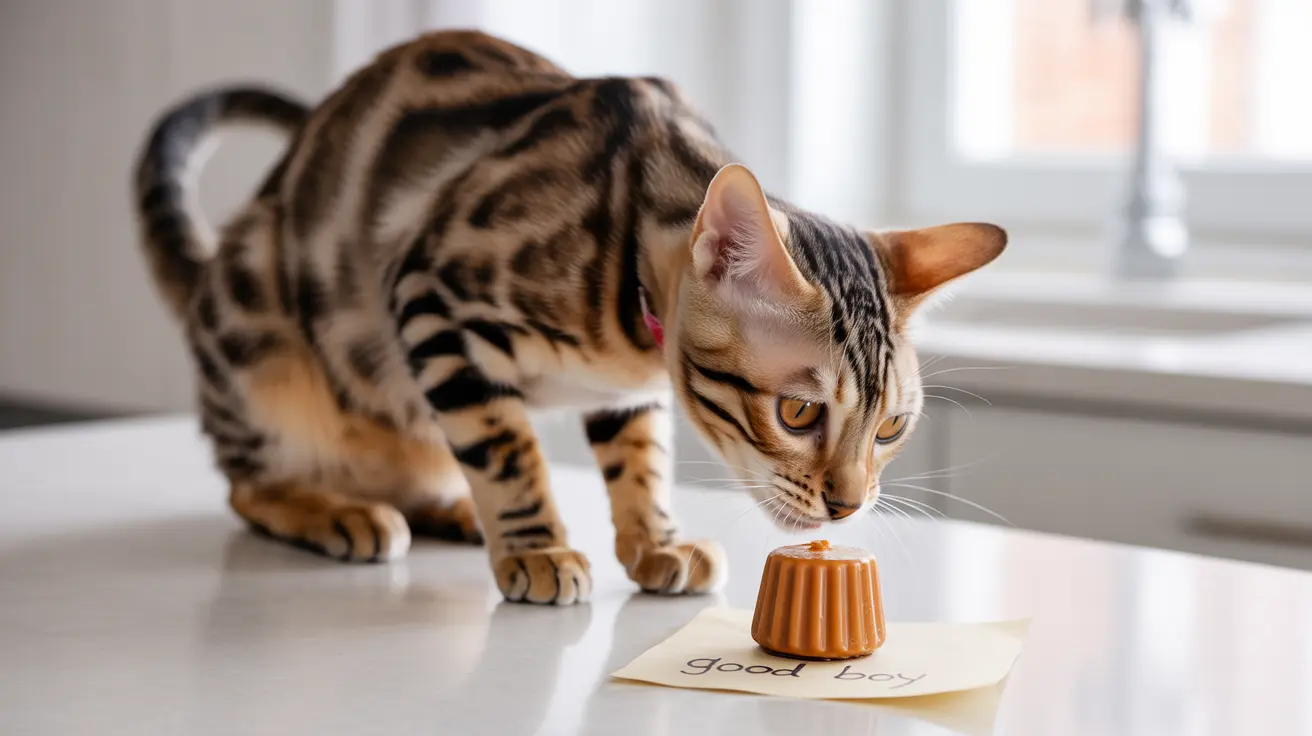Many cat owners wonder about sharing human treats with their feline friends, and caramel often raises questions. While cats might show interest in this sweet, sticky confection, it's important to understand the implications of feeding caramel to cats and why it's generally not recommended.
In this comprehensive guide, we'll explore whether cats can safely consume caramel, the potential risks involved, and what you should do if your cat accidentally ingests this sugary treat.
Understanding Cats and Caramel: The Basics
Cats are obligate carnivores, which means their bodies are designed to process meat-based proteins rather than sugary substances. Interestingly, cats lack the ability to taste sweetness due to a genetic adaptation, making their interest in caramel particularly puzzling to many pet owners.
While caramel itself isn't typically toxic to cats, it offers no nutritional benefits and can lead to several health concerns.
Why Cats Might Be Attracted to Caramel
Despite their inability to taste sweetness, cats may show interest in caramel for several reasons:
- The fat content from butter or cream
- The interesting texture
- The novel smell
- Natural curiosity about human food
Potential Health Risks of Caramel for Cats
Immediate Concerns
When cats consume caramel, they may experience several immediate issues:
- Choking hazards due to the sticky texture
- Digestive upset including vomiting and diarrhea
- Potential airway obstruction
- Dental problems from sugar adhering to teeth
Long-term Health Impacts
Regular exposure to caramel or similar sugary treats can lead to serious health conditions:
- Obesity from excess calories
- Diabetes risk
- Dental decay and gum disease
- Gastrointestinal problems
- Potential pancreatic issues
What to Do If Your Cat Eats Caramel
If your cat manages to consume caramel, take these steps:
- Monitor for signs of distress
- Watch for difficulty breathing or swallowing
- Check for unusual behavior or lethargy
- Contact your veterinarian if concerning symptoms appear
Safe Alternatives to Caramel
Instead of offering caramel, consider these cat-appropriate treats:
- Commercial cat treats designed for feline nutrition
- Small pieces of cooked, plain meat
- Cat grass for natural enrichment
- Interactive toys that dispense cat-appropriate treats
Frequently Asked Questions
Can cats safely eat caramel, or does it pose health risks?
While caramel isn't typically toxic to cats, it poses several health risks including digestive issues, choking hazards, and potential long-term health problems. It's best to avoid feeding caramel to cats.
Why are cats attracted to caramel even though they can't taste sweetness?
Cats are attracted to caramel due to its fat content, interesting texture, and smell, rather than its sweetness. They lack the genetic ability to taste sweet flavors.
What are the immediate and long-term health effects if my cat eats caramel?
Immediate effects can include digestive upset, choking risks, and dental issues. Long-term effects may include obesity, diabetes, dental disease, and chronic gastrointestinal problems.
Is caramel toxic to cats if it contains chocolate or artificial sweeteners like xylitol?
Yes, caramel containing chocolate or xylitol is toxic to cats. Chocolate contains theobromine and caffeine, which are poisonous to cats, while xylitol can cause severe illness or death.
What safe treat alternatives can I offer if my cat shows interest in human sweets like caramel?
Safe alternatives include commercial cat treats, small pieces of plain cooked meat, cat grass, and interactive toys that dispense cat-appropriate treats.
Conclusion
While caramel may seem harmless, it's best to keep this sweet treat away from your feline friend. Instead, focus on providing species-appropriate treats and maintaining a balanced, nutritious diet. Your cat's health and well-being depend on making informed choices about their food and treats.






